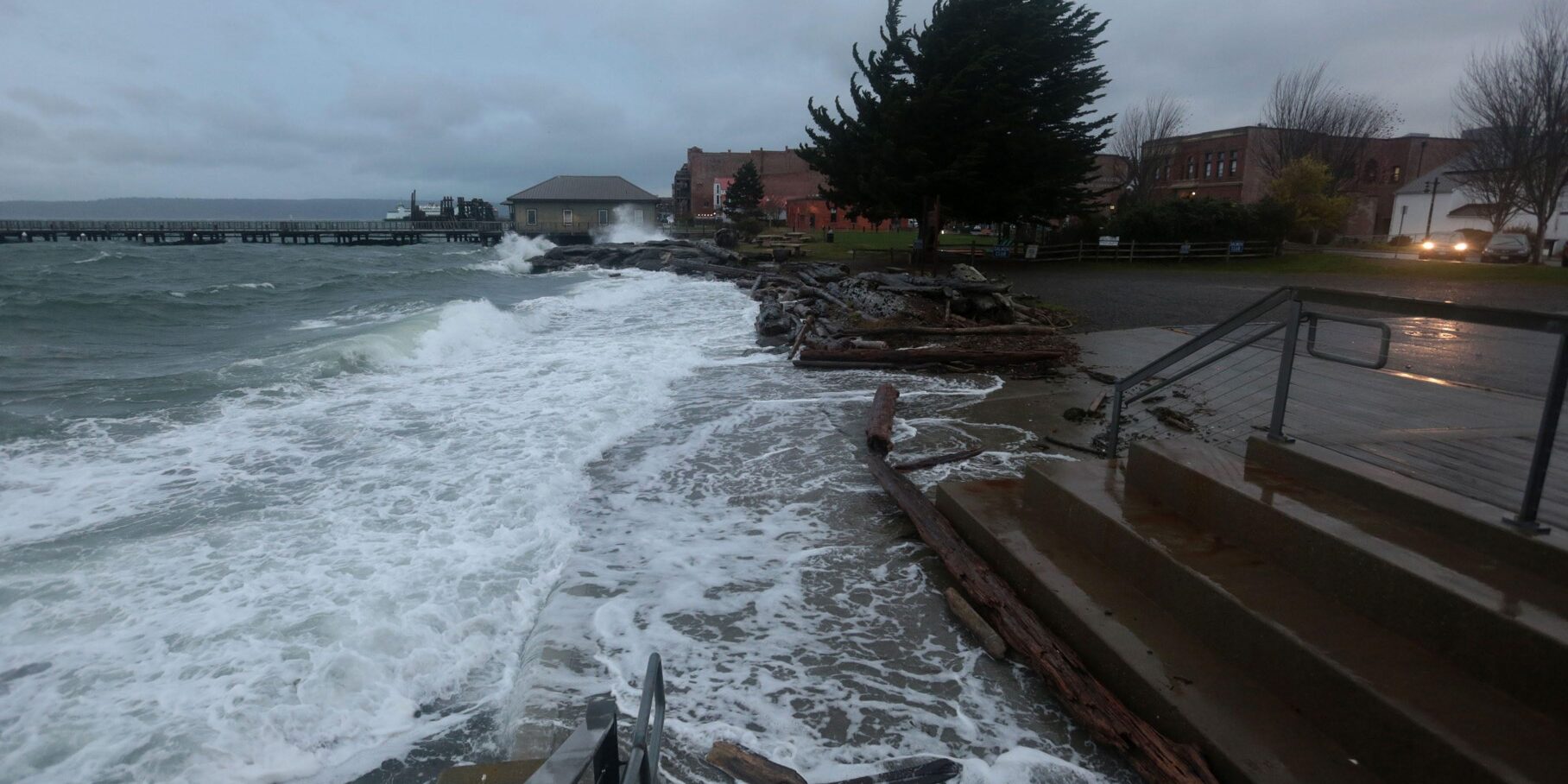There was a higher than average predicted tide on November 4th (8.77′ predicted) along with a strong SE wind (30 kts gusting to 43 kts), which gave us another chance to visualize the higher sea levels that will become more often in the future due to global sea level rise, and a few of Local 20/20’s Climate Action Group volunteers were out there to capture it. You can learn more about the project in this post. The photos from the project are shared on the MyCoast website (you can zoom in on the map to find the Port Townsend photos.)
Below is Dave Wilkinson’s summary of the Nov 4, 2024 tide, featuring photos from Barney Burke. The wave runup was a new high for what the team has measured, at 2.7′ at the Salmon Club Boat Ramp.


If you are interested in exploring some of the tools listed in the slides above here are some links:
- Astronomical Tides: https://tidesandcurrents.noaa.gov/map/index.html, and then select the area of interest.
- Regional storm surge guidance that looks out 7 days is at: https://ocean.weather.gov/Loops/ocean_guidance.php?model=STOFS&area=Northwest&plot=surge&day=99&loop=0#top
- Storm Surge Prediction Tool that looks out ~3 days: https://slosh.nws.noaa.gov/etsurge/index.php?page=stn®ion=wc&datum=mhhw&list=&map=0-48&type=both&stn=watown
- The NOAA Sea Level Rise Coastal Viewer that has some rough information on coastal elevations across the country. It visually shows what areas are inundated at various levels of sea level rise above Mean High Higher Water (MHHW). Here it is for Port Townsend and 3′ of SLR, referenced to MHHW (which is 8.5′ for the PT tide gauge). So that gives a sense of what a 11.5′ water level (tide prediction plus surge) on the storm surge tool would look like (which has only been seen twice in the last 50 years, most recently on 12/27/22). (Note that these use only the elevation of a given site, and any physical barriers like sea walls, etc., are not taken into account.)
- If you would like more information, contact the Local 20/20 climate group at CAG@L2020.org.




















